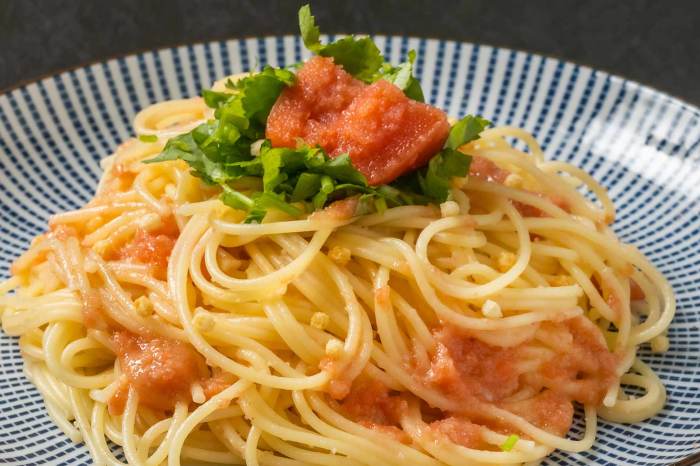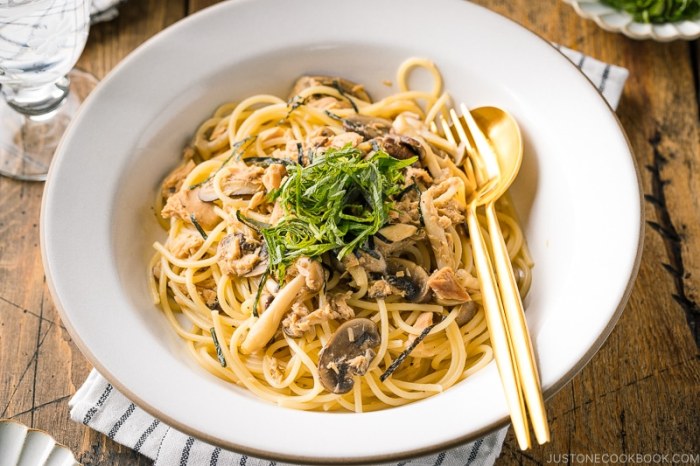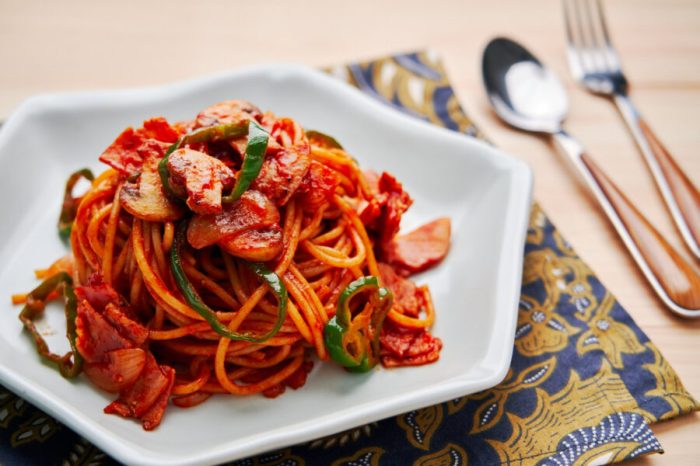How to cook japanese style alimentary pasta – Are you ready to elevate your cooking skills and impress your friends and family with a delicious Japanese-style alimentary pasta dish? Look no further, as we guide you through the process of creating a mouth-watering pasta dish that will leave everyone wanting more.
Understanding the Basics: How To Cook Japanese Style Alimentary Pasta

When we talk about Japanese-style alimentary pasta, we are referring to a fusion of Italian pasta with Japanese flavors and ingredients. This unique combination results in a dish that is both comforting and exciting to the taste buds.
Tips for Success
- Use high-quality pasta for the best texture and flavor.
- Incorporate traditional Japanese ingredients such as miso, soy sauce, and seaweed for an authentic touch.
- Don’t be afraid to experiment with different flavor combinations to find what works best for your palate.
What Do You Mean by Japanese-Style Alimentary Pasta?
Japanese-style alimentary pasta is a creative twist on traditional Italian pasta dishes. It involves using Japanese ingredients and flavors to bring a unique and delicious spin to classic pasta recipes.
So, you wanna know how to cook culliflower Italian style, huh? Well, let me tell you, it’s all about the flavors! Check out this awesome recipe for how to cook culliflower Italian style and impress your family with your culinary skills! Trust me, they’ll be asking for seconds!
What Is Known About This Dish?, How to cook japanese style alimentary pasta
Japanese-style alimentary pasta has gained popularity in recent years due to its innovative approach to combining two culinary traditions. It offers a fresh and exciting take on pasta dishes that is sure to impress even the most discerning food enthusiasts.
Solution for a Delicious Dish
To create a mouth-watering Japanese-style alimentary pasta dish, you will need to carefully select your ingredients, balance flavors, and pay attention to cooking techniques. With a bit of practice and patience, you can master the art of preparing this delectable dish.
Detail Information on Ingredients

Some common ingredients used in Japanese-style alimentary pasta include miso paste, soy sauce, seaweed, mushrooms, and bonito flakes. These ingredients add depth and complexity to the dish, creating a unique and flavorful experience for your taste buds.
Describing the Process in Depth
To begin, cook your pasta according to package instructions until al dente. In a separate pan, sauté minced garlic and onions in olive oil until fragrant. Add your choice of protein, such as shrimp or chicken, and cook until browned. Stir in miso paste, soy sauce, and a splash of broth to create a savory sauce.Once your sauce is well combined, add cooked pasta to the pan and toss to coat.
So, you wanna know how to cook culliflower Italian style, huh? Well, let me tell you, it’s all about the seasoning, my friend! You gotta sprinkle that culliflower with some Italian herbs and spices, then roast it in the oven until it’s nice and crispy. Trust me, it’s gonna be bellissimo! For a detailed recipe, check out how to cook culliflower Italian style.
Garnish with seaweed, mushrooms, and bonito flakes for an added layer of flavor. Serve hot and enjoy the delicious fusion of Japanese and Italian cuisines in every bite.
Conclusion

In conclusion, cooking Japanese-style alimentary pasta is a fun and rewarding experience that allows you to explore new flavors and techniques in the kitchen. By following our tips and guidelines, you can create a delicious and memorable dish that will delight your taste buds and impress your guests. So, roll up your sleeves, gather your ingredients, and get ready to embark on a culinary adventure like no other.
Frequently Asked Questions
- Can I use any type of pasta for Japanese-style alimentary pasta?
- What are some alternative ingredients I can use to customize my dish?
- How can I adjust the flavors to suit my personal preferences?
- Are there any specific cooking techniques I should be aware of when making this dish?
- Can I make a vegetarian or vegan version of Japanese-style alimentary pasta?
